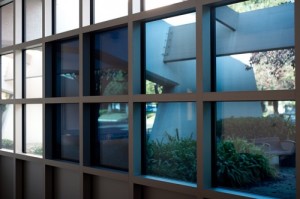How Smart Glass Works
Smart glass is a general nickname for glass that is electrically switchable between tints or shades. There are several different types of smart glass technology, however the most prolific are suspended particle devices (SPDs).
SPDs are sheets of glass that contain a matrix polymer film filled with crystalline particles encased in a carrier fluid. In their natural state these particles block light, with a non-uniform pattern preventing rays from passing properly.
Key to this tech is that when electricity is passed through the particles – via a pair of electrodes mounted to the polymer matrix – the current forces the particles to align in a uniform pattern. This allows a far greater quantity of natural light to penetrate the glass, granting it a transparent quality and high light value.
Currently smart glass is being incorporated into offices, houses and vehicles – like the Mercedes-Benz 2012 SLK Roadster. Its popularity stems from the privacy it provides and also its heat-retention qualities, with shaded glass offering significant reductions in heat loss and thus overall energy savings.
Inside the glass that can adapt
 Light – Light rays entering the glass are blocked when no electric charge is present, but pass freely when the electricity is on.
Light – Light rays entering the glass are blocked when no electric charge is present, but pass freely when the electricity is on.
Transparent electrode – Either side of the polymer matrix are two electrodes which, when activated, force the particles to align.
Carrier fluid – The light-absorbing crystalline particles are suspended within the film layer – a polymer matrix -by a carrier fluid.
Film sheet – The glass panel is coated/inserted with a film sheet. This polymer matrix film is filled with light-absorbing particles.
Particles – The crystalline particles are in a non-uniform pattern in their natural state, causing light rays to be partially blocked.
